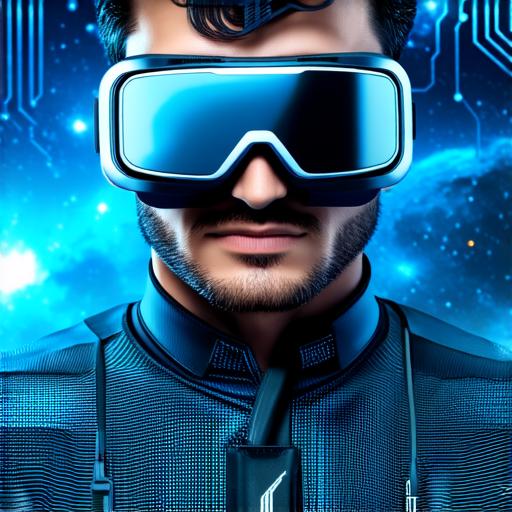
Why virtual reality is the future

As technology continues to evolve, virtual reality (VR) has emerged as one of the most promising and exciting fields. From gaming to healthcare, VR has the potential to revolutionize the way we interact with our digital world.
1. Virtual Reality is Immersive
One of the key reasons why virtual reality is the future is because it offers a truly immersive experience. By wearing a VR headset, users can feel as though they are physically present in the virtual world.
This has already been demonstrated in a number of different applications. For example, surgeons have used VR to practice complex procedures, allowing them to gain valuable experience without putting patients at risk. Similarly, architects and interior designers have used VR to visualize their designs and make changes in real-time, saving time and reducing the need for physical prototypes.
2. Virtual Reality is Interactive
Another key advantage of virtual reality is its interactivity. Users can interact with virtual objects in a way that was previously impossible, allowing them to explore new possibilities and gain valuable insights.
For example, car manufacturers have used VR to test new designs and features, allowing customers to see how their cars will look and feel before they buy them. Similarly, real estate agents have used VR to showcase properties in 3D, giving buyers a better sense of the space and helping them make more informed decisions.
3. Virtual Reality is Cost-Effective
Virtual reality can also be incredibly cost-effective, particularly for industries that rely on physical prototypes or simulations.
For example, aerospace engineers have used VR to test aircraft designs and systems, reducing the need for expensive physical tests and saving time. Similarly, pharmaceutical companies have used VR to simulate clinical trials, allowing them to test new drugs in a safe and controlled environment.
4. Virtual Reality is Accessible
One of the most exciting aspects of virtual reality is its accessibility. With a VR headset, anyone can enter a virtual world, regardless of their physical limitations or location.
This has already been demonstrated in a number of different applications, particularly in healthcare. For example, patients with mobility issues have used VR to access therapy and rehabilitation programs that were previously out of reach. Similarly, remote workers have used VR to collaborate with colleagues from around the world, allowing them to work together as if they were in the same room.
5. Virtual Reality is Revolutionizing Entertainment
Finally, virtual reality has the potential to revolutionize the entertainment industry. From gaming to movies and beyond, VR offers a new way to experience media that was previously impossible.
For example, gamers can now explore fully immersive worlds and engage with characters in ways that were previously only possible in their imaginations. Similarly, filmmakers have used VR to create highly engaging and immersive experiences for viewers, allowing them to step into the story like never before.
In conclusion, virtual reality is the future. From gaming to healthcare and beyond, VR offers a wealth of opportunities for developers and users alike. With its immersive, interactive, cost-effective, accessible, and revolutionary potential, VR is set to change the way we interact with our digital world in ways that were previously unimaginable. As technology continues to advance, virtual reality will only continue to grow and evolve, opening up new possibilities for innovation and exploration.


